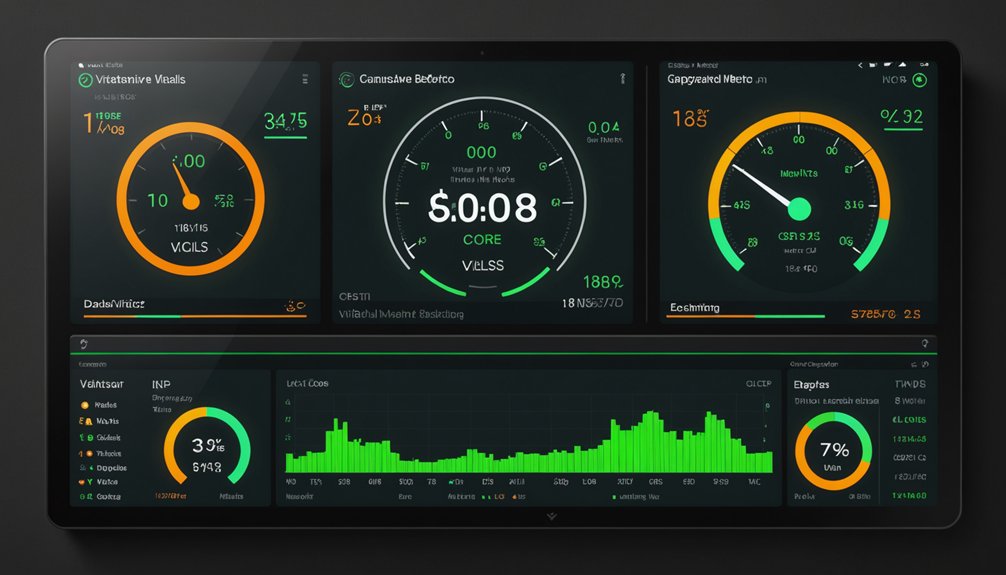Implementing NLP in chatbots requires specific steps. First, collect user input through text or speech interfaces. Then apply Natural Language Understanding to analyze meaning and context. Dialogue management maintains conversation flow—crucial for avoiding those robotic, search-engine-like responses. Response generation uses algorithms to create human-like replies. Machine learning continuously improves performance through interaction data. Voice recognition now approaches human-level accuracy. The real magic happens when systems start understanding context, not just keywords.

The digital revolution waits for no one. Businesses scrambling to keep up are turning to chatbots powered by Natural Language Processing. NLP, a branch of artificial intelligence, lets computers understand and generate human language. Not rocket science, but close. These smart chatbots are transforming customer service experiences everywhere. They’re more intuitive. More human-like. Nobody wants to talk to a digital brick wall anymore.
Implementing NLP in chatbots starts with gathering user input—text or speech, doesn’t matter. The system then analyzes this input using Natural Language Understanding. For speech, there’s Automatic Speech Recognition. Yeah, it’s a lot of acronyms. Deal with it. The analyzed input then travels through dialogue management systems that maintain conversation context. Without context, chatbots are just glorified search engines.
User input flows through NLP systems like data through a maze. Without context, your fancy chatbot is just Google with attitude.
The magic happens when Natural Language Generation kicks in to formulate responses. But they’re not pulling answers out of thin air. Machine learning models and deep learning algorithms handle complex language patterns and constantly improve performance. These systems learn from each interaction, getting smarter over time. Or at least, that’s the theory. Modern real-time analysis capabilities enable swift identification and removal of inappropriate content, ensuring safer conversations. Modern voice recognition systems achieve near-human accuracy through deep learning and neural networks.
Tokenization breaks text into manageable chunks. Named Entity Recognition identifies specific elements like names and locations. Together, they help chatbots understand what users actually want, not just what they say. There’s a difference, trust me.
Businesses love NLP-enhanced chatbots because they’re cost-effective. Automation reduces operational costs while improving accuracy and user satisfaction. In e-commerce, these intelligent systems have been shown to reduce cart abandonment rates by 30%, directly impacting bottom-line results. Win-win, right? Not always. Human language is complicated. Idioms, sarcasm, regional expressions—these trip up even the best systems.
Challenges remain. Data quality issues can derail performance. Integration with existing systems isn’t always seamless. And ethical considerations loom large. Privacy concerns, biased responses—the pitfalls are real.
But the technology keeps advancing. Conversational AI combining NLP, NLU, and NLG promises increasingly natural interactions. Modern NLP chatbots provide 24/7 support in multiple languages, dramatically improving the overall customer experience. The future of chatbots isn’t just automated—it’s intelligent.
Frequently Asked Questions
What Is the ROI of Implementing NLP in Chatbots?
NLP chatbots deliver impressive ROI numbers. The formula’s simple: ROI (%) = [(Benefits – Costs) / Costs] x 100.
A typical implementation costing $25,000 can generate $62,000 in benefits, yielding a 148% ROI. Pretty decent, right?
Support cost savings average around 1,275% – that’s not a typo. Businesses see increased customer engagement, higher order values (up 20%), and operational savings.
The numbers don’t lie. NLP chatbots pay for themselves, fast.
How Long Does NLP Integration Typically Take for Chatbots?
NLP integration timelines vary dramatically. Simple implementations using third-party tools? Just a few weeks.
Complex custom solutions with machine learning components? Months, possibly longer.
It’s not a quick fix. Development teams need time for setup, testing, and iteration. Basic functions like tokenization come first. Then the hard stuff.
The timeline extends beyond deployment too. NLP models require continuous refinement based on user interactions. They’re never really “done.” That’s just reality.
Can NLP Chatbots Handle Multiple Languages Simultaneously?
Yes, NLP chatbots can handle multiple languages simultaneously. They use machine translation and language understanding capabilities to process various languages without missing a beat.
Pretty impressive, right? These multilingual bots bridge language barriers and expand global reach for businesses.
They’re not perfect though. Complex nuances, idioms, and cultural contexts still trip them up sometimes. Advanced AI models and diverse training datasets help, but some linguistic subtleties remain challenging.
The technology keeps improving.
What Privacy Concerns Arise When Using NLP in Customer Service?
Privacy concerns with NLP in customer service are no joke.
Systems collect sensitive data—payment details, personal IDs—often without proper consent. Compliance with GDPR or CCPA? Not always guaranteed.
Training data can perpetuate biases, leading to discrimination. Then there’s the security nightmare: data breaches happen.
Cultural misunderstandings and contextual failures can expose private information accidentally. Companies love collecting data but protecting it? That’s another story.
Most struggle with balancing convenience and privacy. Not pretty.
How Often Should NLP Models Be Retrained for Optimal Performance?
NLP models need retraining when major changes hit. New products launched? Retrain. Customer questions evolving? Retrain.
The model gets stale, just like milk. Transfer learning and active learning help speed things up. Smart companies monitor performance metrics—accuracy doesn’t lie.
Some businesses update monthly, others quarterly. Depends on your data volume.
Bottom line: regular updates keep chatbots relevant. Wait too long and your bot starts sounding like your grandpa trying to use slang.




